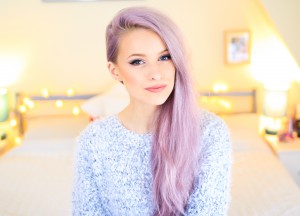
After more than 40 years of operation, DTVE is closing its doors and our website will no longer be updated daily. Thank you for all of your support.
MCNs, digital brands and the future of online content
As multichannel networks come of age, the future of online content looks increasingly geared towards rights ownership and multi-platform distribution, reports Andy McDonald.
In recent years the multichannel network approach to distributing vast amounts of content online has received considerable attention, as well as the backing of traditional media companies. A spate of deals and acquisitions has seen practically all the major players in this space snapped up by broadcasters and traditional content makers in recent years – exemplified by Discovery’s 2012 purchase of Revision3, Dreamworks’ 2013 deal for AwesomenessTV and Disney’s 2014 buyout of Maker Studios.
However, as the online content models mature, the MCNs’ aggregation model for mainly user-generated YouTube content is starting to evolve, according to industry insiders and online content specialists. Speaking at a recent Royal Television Society event focused on the future of TV – titled ‘Beyond YouTube’ – Ampere Analysis research director Richard Broughton said that a few years ago MCNs acted very much as “middlemen” between content creators and YouTube, but that this is now starting to shift as these networks focus more on producing their own content.
Speaking to Digital TV Europe, Broughton explains: “There’s still a big aggregation role for MCNs, but the model is changing. There is value in owning their own content. They don’t then have to share the proceeds of the ad revenue, the sponsorship and the brand affiliations with third parties if they have full control over the IP.”
Broughton says that from his research, MCNs that have “more tightly integrated workflows and IP ownership” tend to be more profitable and are valued higher. Yet at the same time, he claims that a diversification of platforms, the maturity of the online market, and increasing competition puts MCNs “in a better position as aggregators now”, pointing to the growing significance of outlets like Facebook, Snapchat and Instagram.
“YouTube’s still the big dog, but these platforms are becoming increasingly important in different ways. The messages which resonate with audiences on these platforms are different, so you can’t use Snapchat in the same way as YouTube and arguably you can’t use Facebook in the same way as YouTube,” he says, adding that monetisation models on these services are also “still evolving”.
James Stafford is senior vice-president, Europe, at Stylehaul – an MCN that aims to unite brands and creators around content primarily focused on style and beauty. In 2014 German broadcaster RTL bought a majority stake in the business, which turns five years old in 2016. However, despite doubling the number of influencers and channels it represents in the past year to around 6,000 today, Stafford says that “the thing that’s going to mark our next few years is an appreciation that scale isn’t absolutely everything”.
“There’s no point reaching 1 billion or 10 billion people if you can’t influence them, you can’t add value to them and if you can’t help brands to understand who those people are. Our focus has really been on engagement,” he says, explaining that the firm’s core business is based around helping brands to build campaigns and reach social communities.
Stylehaul’s roots are firmly in the YouTube vlogger community, representing stars like Zoella, InTheFrow and Fleur DeForce.Stafford says that he sees YouTube as “video social networking”, with the firm separately pursuing an original content strategy. Last year it co-produced a feature-length music documentary called Freshly Dressed; a series of online shorts for UK broadcaster Channel 4’s All 4 service called Internet Famous; and this year signed a deal with Verizon’s mobile video service Go90 to produce a series called Relationship Status.
“We want to get really, really good at producing original content under the Stylehaul brand. Whether that’s making it for our own distribution, for a platform like Channel 4, or whether that’s making a television show, film or documentary, I think we really want to upscale in those areas,” says Stafford, discussing the company’s future direction.
He claims that another big focus area is in helping brands get more intelligence on campaigns they run – looking at the interplay between posts on services like Instagram, YouTube and Snapchat and tapping into the “long-tail of social media”.
Luke Hyams, creative director of Maker Studios International, says that it too is looking at “innovative ways” to tell stories across platforms like Snapchat, Periscope, Instagram and Facebook, claiming this is one of the creative challenges it “relishes most”.
“The important thing we keep in mind is that the distribution destination is motivated by both the story and the audience, rather than purely making content for platforms to keep up with the pack,” says Hyams.
Discussing the future evolution of the online entertainment space, he says that “now, more than ever, consumers have a plethora of choices for entertainment” and that “creators and producers will need to continue to elevate and evolve their creative process, appealing to audiences in new, unique ways.”
Maker claims to be the largest content network on YouTube, accounting for more than 10 billion views each month and over 650 million subscribers. Founded in 2009, the firm now represents 55,000 independent creator partners from more than 100 countries. However, it too has its own strategy for producing formats and original programming.
Hyams says that Maker is collaborating with established and up-and-coming online creators to produce a range of content across devices and genres. “The individual videos or series which we collaborate on are often centred around enabling specific creator aspirations in an effort to find formats that can elevate and/or expand their creative output and often expose them to new audiences.”
One recent production is Scare PewDiePie – a web series starring videogame vlogger, and one of the Maker’s biggest stars, Felix Kjellberg, aka PewDiePie – that is co-produced by Maker and is available exclusively on YouTube’s subscription service, YouTube Red.
Digital IP
The power of digital-first content is no longer in doubt, with brands like Vice Media proving the model for millennial-focused online video. Disney reportedly invested a further US$200 million (€178 million) into the company in December, giving it a valuation of US$4 billion. Vice has since also launched its linear channel Viceland in the US with A+E Networks and plans to bring it to the UK this year with Sky.
UK-based Bigballs Media is something of a veteran of the digital content space. Founded in 2006 the company started producing for platforms like Bebo and has also dabbled in linear TV with the co-produced comedy-drama series You, Me and the Apocalypse. The firm is now firmly focused on digital football content and CEO and founder Tom Thirlwall says it is pursuing the “Vice model” of a rapidly evolving media business.
Bigballs launched Copa90 as a YouTube channel in 2012 to shine a light on football fan culture. This has since notched up more than 134 million views and the brand now sits across multiple platforms including Facebook, Snapchat, Instagram and Periscope. The firm recently bought North American rival KickTV after receiving £7 million (€9 million) in funding from Liberty Global and venture capital firm e.ventures in October, and aims to cement its place in the online sports landscape.
“Our ambition by World Cup 2018 is to become the most influential football media business on Earth,” says Thirlwall, explaining the firm’s evolution from an “innovative production company that understood how to distribute content online” to a brand-building, “new model” football media business.
“There is a huge opportunity that’s presented to us because traditional media simply can’t satisfy the demands of a young millennial audience. Their legacy business models and the fact that they’re tethered around the traditional rights model means that there’s a huge opportunity for us to engage an audience constantly – between each 90 minutes of the game and during the game as well. We’re always on, 365 days per year.”
Bigballs is focused on “driving the football agenda and conversation” and is “somewhere between a Buzzfeed and a Vice Media”, according to Thirlwall, who is keen to point out the distinction between its approach to web media and that of aggregator, ad-sales network MCNs that don’t own their own IP.
While the MCN model is starting to change, the power of standalone digital brands is coming into focus. Where young viewers flock, brands will surely follow and the 21st century model for millennial media looks less and less about YouTube ad-revenues and more about total engagement and tapping into the power of a range of social platforms.



